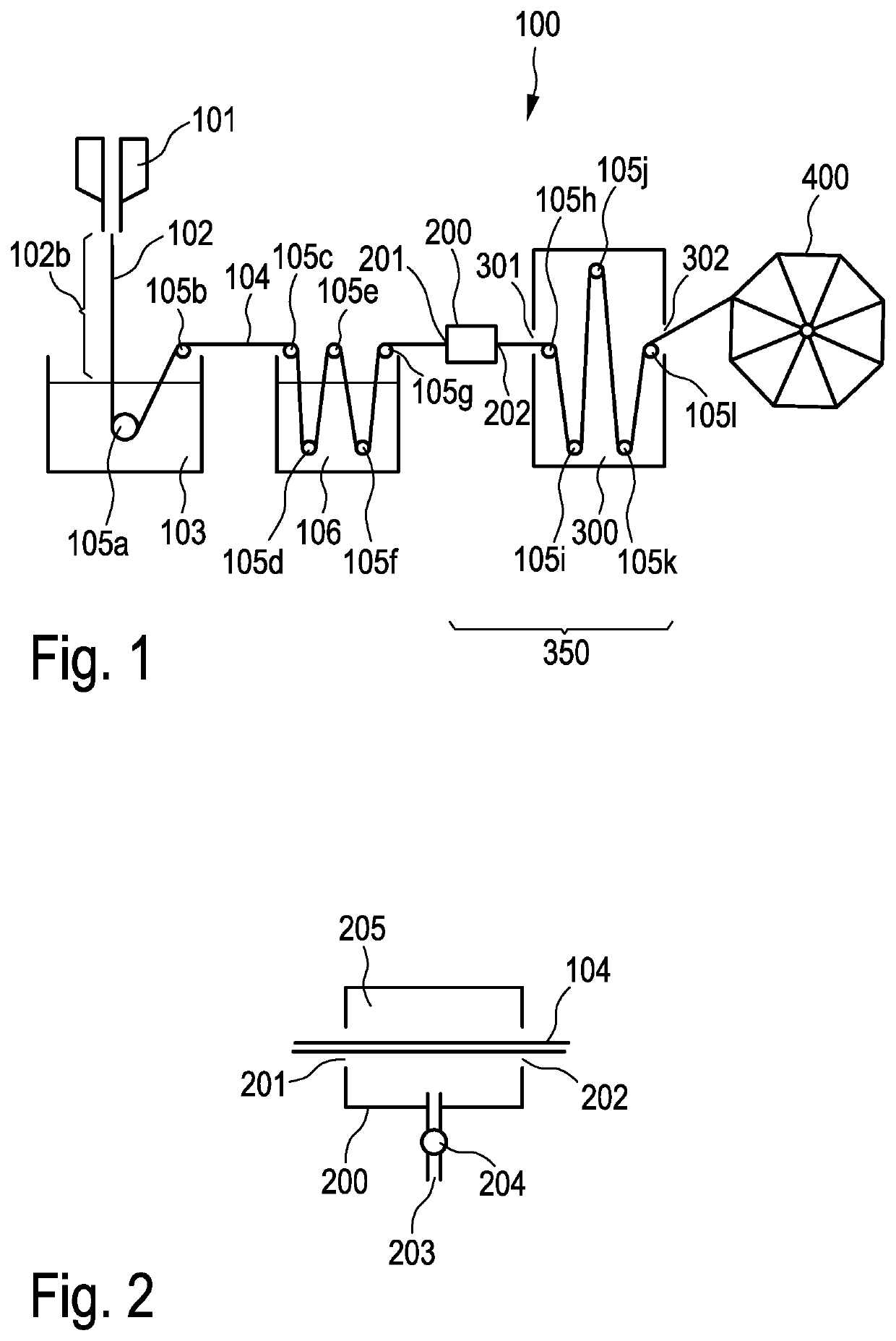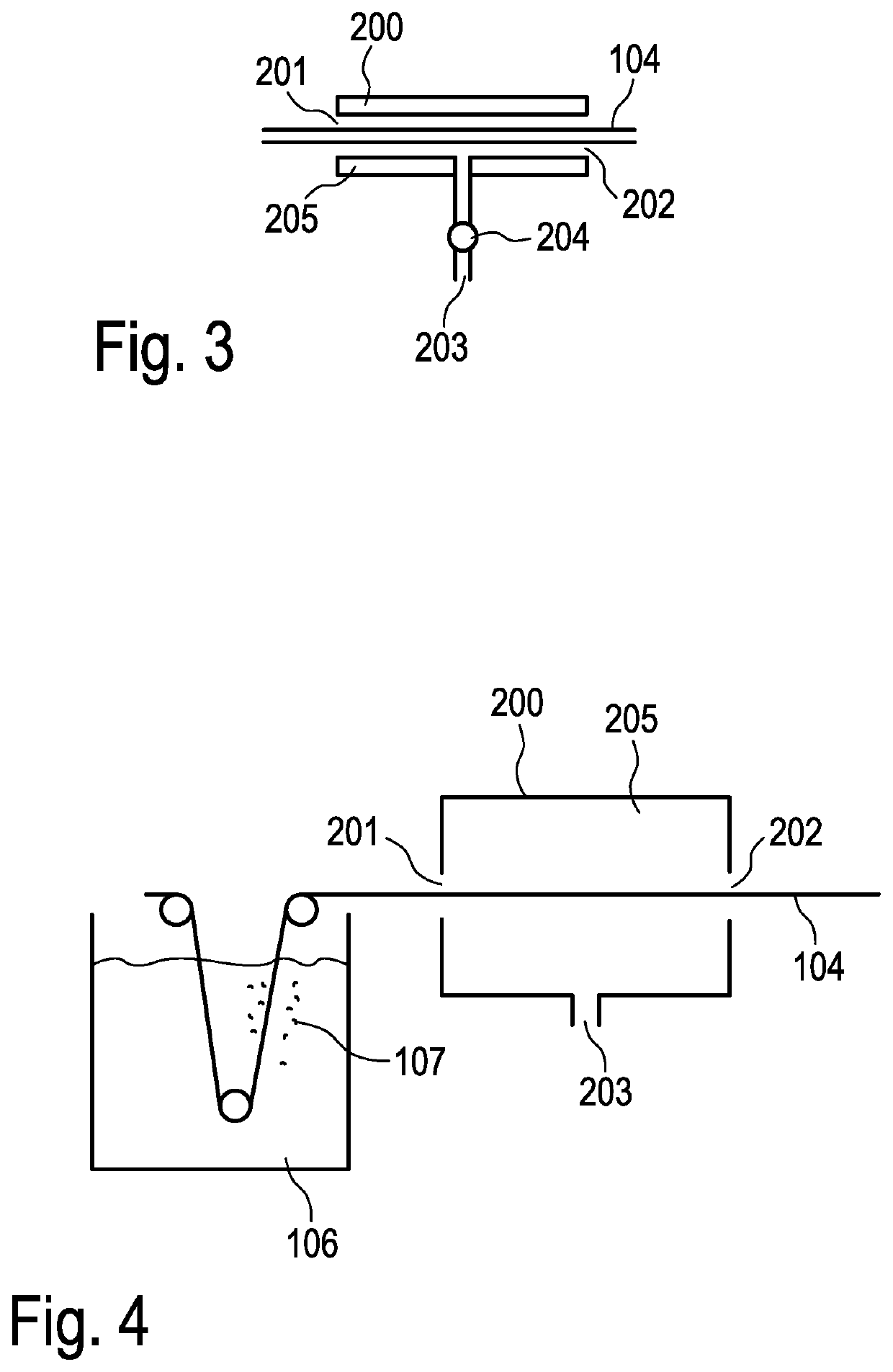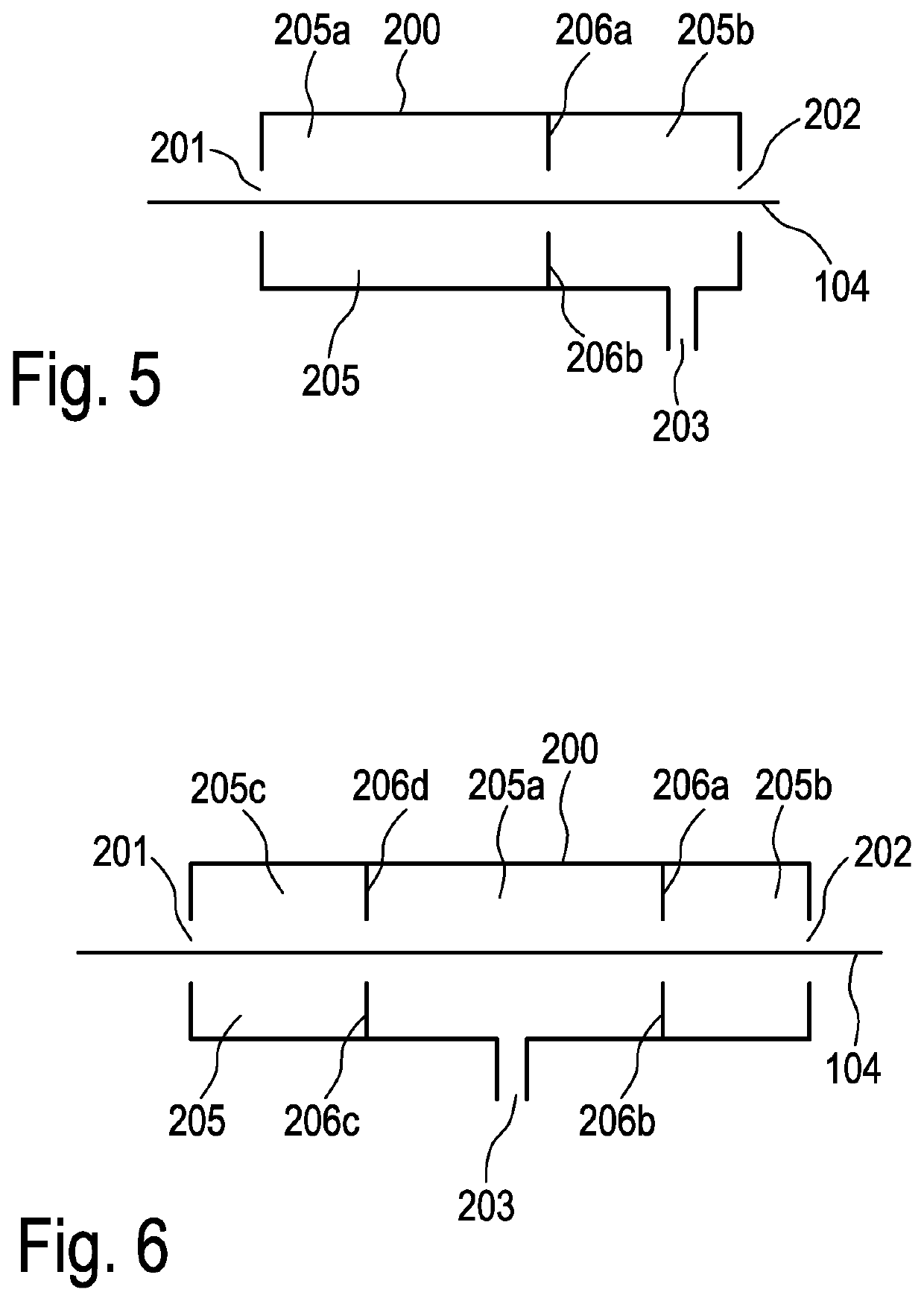System and method for producing hollow fibre membranes
- Summary
- Abstract
- Description
- Claims
- Application Information
AI Technical Summary
Benefits of technology
Problems solved by technology
Method used
Image
Examples
example 1
[0129]In contrast to comparison example 1, in example 1 the group of 16 hollow fiber membranes was guided through a pressure chamber in accordance with the embodiment according to FIG. 10, after passing through the rinsing baths and before being introduced into the tempering chamber. Air was introduced via the gas inlet of the pressure chamber so that a pressure of 3000 hPa was created in the central conical cavity of the pressure chamber, a pressure of 1500 hPa in the second conical cavity of the pressure chamber and a pressure of 1300 hPa in the third conical cavity of the pressure chamber. The dried hollow fiber membranes were wound up and examined as regards any possible defects. The manufacture of the hollow fiber membranes according to example 1 was carried out at different draw-off speeds. According to this, no fiber damage was found at a draw-off speed of 650 mm / s. The term draw-off speed is intended to refer to the speed at which the hollow fiber membrane passes through the...
PUM
| Property | Measurement | Unit |
|---|---|---|
| Temperature | aaaaa | aaaaa |
| Temperature | aaaaa | aaaaa |
| Pressure | aaaaa | aaaaa |
Abstract
Description
Claims
Application Information
 Login to View More
Login to View More - R&D
- Intellectual Property
- Life Sciences
- Materials
- Tech Scout
- Unparalleled Data Quality
- Higher Quality Content
- 60% Fewer Hallucinations
Browse by: Latest US Patents, China's latest patents, Technical Efficacy Thesaurus, Application Domain, Technology Topic, Popular Technical Reports.
© 2025 PatSnap. All rights reserved.Legal|Privacy policy|Modern Slavery Act Transparency Statement|Sitemap|About US| Contact US: help@patsnap.com



